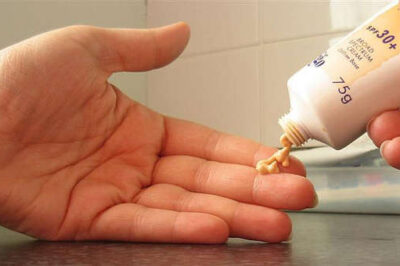Many sunscreens do not offer the protection we think they do, or even what they claim to offer. Therefore, while we should definitely continue to use sunscreens, we need to avoid developing a false sense of security about their ability to protect us and our loved ones.
Such a miscalculation can lead to sunburns, which can cause deadly skin cancer … not to mention a world of hurt.
There are two types of rays: UVA and UVB. Until recently, health experts thought only the UVB rays were dangerous. For that reason, the SPF number on a sunscreen only refers to how well it protects against UVB rays.
Now we know that the UVA rays are also dangerous. That means the first thing you must do when choosing a sunscreen is make sure it protects against both UVA and UVB rays, by choosing one that offers “broad spectrum” protection.
Secondly, choose one with an SPF of at least 30. But be careful not to be fooled by an extremely high SPF numbers, such as 50.
Consumer Reports tested 34 sunscreens and found that one-third of them failed to meet their SPF and water-resistant claims … some were way off, up to 70 percent wrong.
Most of those failing products had an SPF of below 30. Then there were errors on the other side. Coppertone ClearlySheer for Beach and Pool SPF 50+ tested as an SPF 37 and Banana Boat Sport Performance with Powerstay Technology SPF 100 tested as an SPF 36.
Another problem Consumer Reports uncovered was that the sunscreens didn’t hold up very well in water. The lesson learned from that is that we should indeed purchase waterproof sunscreens, but make sure to re-apply them after getting out of the water.
Towel-dry first so that you apply the sunscreen to dry skin. Even if you’re not in the water, make sure to re-apply sunscreen at least every two hours, but more frequently if you do get wet, which includes sweat.
As any parent knows, applying sunscreen every time their child comes out of the water is nearly impossible. That’s why it’s best not to rely too heavily on sunscreens to protect your youngsters. We must take other precautions.
This goes not only for kids, but for all of us. In fact, research show that people who rely on sunscreen alone tend to burn more than those who stay in the shade and wear long sleeves.
Try to avoid the sun or stay in the shade when the sun is the strongest, which is from 10 a.m. until 4 p.m. Wear a hat and clothing made from tightly woven fabric. Dark colors are better at blocking UV rays. Hold clothing up to the light. If you can see through it, the rays can get through it, too.
In order to avoid the common mistakes people tend to make when it comes to applying sunscreens, keep these tips in mind:
- Apply sunscreen 15-30 minutes before you go outside.
- Make sure you use at least one teaspoon of sunscreen on each body part. The face, head and neck counts as one body part, as does one arm. Also one leg. The chest and abdomen count as one body part. The back plus the back of the neck is another.
- Watch out for spray-on sunscreens due to the risk of inhaling toxic ingredients. In fact, Consumer Reports recommends avoiding the use of spray sunscreens on children, who are at the greatest risk of complications from inhaling them. If you absolutely must use a spray sunscreen on a child, at least spray it into your hand first and then rub it on your little one. Sprays tend to miss their mark when it’s windy. Don’t spray directly on your face. And since spray sunscreens are flammable, don’t go near an open flame until it dries on the skin.
So when it comes to outdoor activities, make sure to wear sunscreen … shoot for one that offers “broad spectrum” protection with an SPF of 30 to 50. Choose a lotion and use lots of it, reapplying early and often.
But whatever you do, don’t rely on that sunscreen as your only protection against the harmful rays of the sun. Try to avoid the harshest midday rays. And while outside, wear protective clothing and seek shade whenever possible.
For the original article, visit cbn.com.








Leave a Comment
You must be logged in to post a comment.